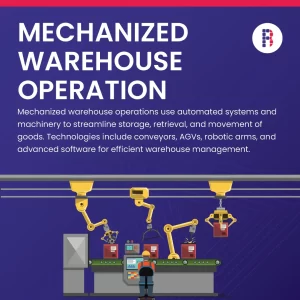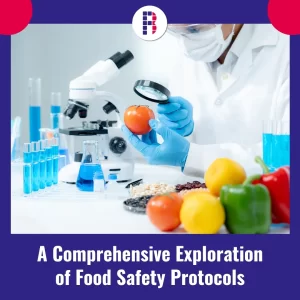Introduction
Health, Safety, and Environment (HSE) management in food manufacturing industries is a critical aspect of ensuring the well-being of employees, safeguarding the environment, and maintaining the quality and safety of food products. This comprehensive guide explores the meaning of HSE in the context of food manufacturing and emphasizes its importance in creating a secure and sustainable working environment.
Understanding HSE in Food Manufacturing
HSE in the context of food manufacturing refers to a systematic approach to managing health, safety, and environmental risks associated with the production and processing of food products. This multidisciplinary framework aims to prevent accidents, protect employees and consumers, and minimize the environmental impact of manufacturing operations.
Key Components of HSE in Food Manufacturing
- Health Management: Employee Wellness Programs: Implementing initiatives that promote physical and mental well-being among employees, such as health screenings, fitness programs, and stress management workshops.
- Occupational Health and Safety: Identifying and mitigating health risks related to the work environment, including exposure to hazardous substances, ergonomic concerns, and noise pollution.
- Safety Management: Hazard Identification and Risk Assessment: Conducting regular assessments to identify potential hazards in the workplace and assessing the associated risks.
- Emergency Response Planning: Developing and practicing protocols for responding to emergencies, including fires, spills, and other accidents.
- Safety Training: Providing comprehensive training programs for employees on safety procedures, proper equipment usage, and emergency response.
- Environment Management: Waste Management: Implementing effective waste disposal and recycling programs to minimize the environmental impact of manufacturing processes.
- Pollution Control: Utilizing technologies and practices to reduce air and water pollution associated with food manufacturing activities.
- Sustainable Practices: Incorporating eco-friendly practices, such as energy conservation and sustainable sourcing of raw materials, to minimize the ecological footprint.
Importance of HSE in Food Manufacturing
- Employee Well-being: Protecting the health and safety of employees creates a positive work environment, leading to increased job satisfaction and productivity.
Reduced workplace accidents and illnesses contribute to lower absenteeism rates, resulting in a more reliable and efficient workforce. - Consumer Safety: Stringent HSE measures ensure the production of safe and high-quality food products, safeguarding the health and well-being of consumers.
Compliance with regulatory standards and certifications builds trust among consumers, enhancing the reputation of the food manufacturing company. - Environmental Sustainability: Adopting environmentally responsible practices helps minimize the impact of manufacturing activities on ecosystems and natural resources.
Meeting sustainability goals enhances the company’s image and attracts environmentally conscious consumers and partners. - Legal Compliance: Adhering to HSE regulations and standards ensures legal compliance, mitigating the risk of fines, lawsuits, and reputational damage.
Regular audits and assessments help identify areas for improvement and demonstrate a commitment to responsible business practices.
Implementation Strategies for HSE (Health, Safety, and Environment) Management in Food Manufacturing Industries
Implementing a robust HSE management system in food manufacturing requires a comprehensive and systematic approach. Here’s a detailed guide on strategies for successful implementation:
- Leadership Commitment:
- Top-Down Approach: Leadership should champion HSE initiatives, setting the tone for a culture of safety and environmental responsibility.
Resource Allocation: Allocate adequate resources, both financial and human, to support HSE programs and initiatives. - Risk Assessment and Management:
- Hazard Identification: Regularly assess and identify potential hazards in all aspects of the manufacturing process.
Risk Analysis: Evaluate the severity and likelihood of identified risks and prioritize them for mitigation. - Training and Education:
Employee Training: Conduct regular HSE training sessions for all employees, covering topics such as hazard recognition, emergency response, and proper equipment usage.
Management Training: Provide specialized training for management and supervisory staff to ensure effective oversight of HSE programs.
- Emergency Preparedness:
Emergency Response Plans: Develop detailed emergency response plans that cover a range of potential scenarios, from spills to fires.
Drills and Exercises: Conduct regular emergency response drills to ensure employees are familiar with protocols and can respond effectively.
- Environmental Stewardship:
Sustainable Sourcing: Adopt sustainable sourcing practices for raw materials, considering factors such as environmental impact and ethical sourcing.
Waste Management: Implement effective waste management and recycling programs to minimize the environmental footprint of manufacturing processes.
- Continuous Improvement:
Regular Audits: Conduct regular internal and external audits to assess compliance with HSE regulations and identify areas for improvement.
Feedback Mechanisms: Establish mechanisms for employees to provide feedback on HSE practices and encourage the reporting of near misses or potential hazards.
- Technology Integration:
Monitoring Systems: Implement advanced monitoring systems to track environmental performance, air quality, and employee well-being.
Automation: Where feasible, automate processes to reduce manual intervention and associated risks.
- Regulatory Compliance:
Stay Informed: Keep abreast of changing HSE regulations at local, national, and international levels.
Compliance Tracking: Establish a system for tracking and ensuring compliance with relevant regulations.
- Collaboration and Communication:
Internal Communication: Foster open communication channels within the organization to encourage reporting of safety concerns or incidents.
Stakeholder Engagement: Engage with external stakeholders, including regulatory bodies, to stay informed and build collaborative relationships.
- Documentation and Reporting:
Record-Keeping: Maintain comprehensive records of HSE activities, including risk assessments, training sessions, and audits.
Incident Reporting: Establish a clear process for reporting and investigating incidents, ensuring lessons learned are integrated into future practices.
Conclusion
In conclusion, prioritizing HSE management in food manufacturing industries is crucial for ensuring the well-being of employees, producing safe and high-quality food products, and contributing to environmental sustainability. By adopting a proactive approach to health, safety, and environmental concerns, food manufacturers can not only comply with regulations but also build a reputation for responsible and ethical business practices in an increasingly conscious consumer market.






